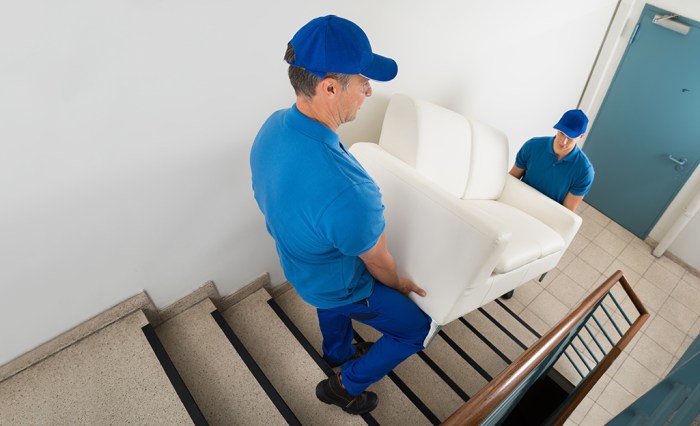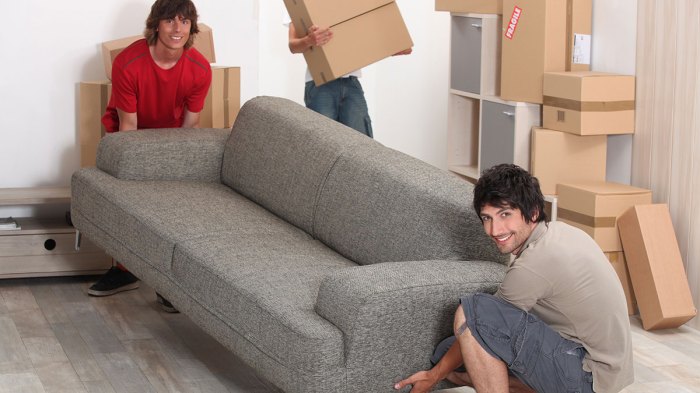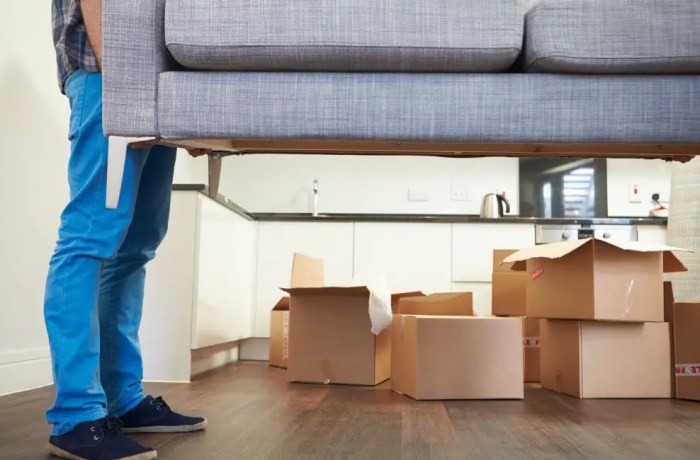Help move furniture – Embark on a seamless furniture moving journey with our comprehensive guide! Dive into the secrets of planning, packing, and maneuvering your precious pieces with ease. From detailed floor plans to expert lifting techniques, we’ve got you covered every step of the way.
Whether you’re a seasoned mover or a first-timer, our insider tips and practical strategies will empower you to navigate the challenges of furniture relocation with confidence. Get ready to transform your new space into a haven of comfort and style.
Planning the Move

Moving furniture can be a daunting task, but with careful planning and preparation, it can be a smooth and stress-free experience. Here’s a detailed guide to help you plan your furniture move effectively.
Before you start packing, it’s crucial to create a floor plan of your new space. This will help you visualize how your furniture will fit and avoid any potential surprises or last-minute adjustments. Take accurate measurements of both your current and new home to ensure that all your belongings will fit comfortably.
Estimating Time and Resources
Accurately estimating the time and resources required for your move is essential for a successful outcome. Consider the following factors:
- Number of items:The more furniture and belongings you have, the more time and resources you’ll need.
- Distance of the move:Longer distances require more time and potentially additional resources.
- Accessibility:Consider the ease of access to both your current and new home. Stairs, narrow hallways, or limited parking can impact the move’s duration.
- Availability of help:If you’re relying on friends or family for assistance, coordinate their schedules and ensure they’re available on moving day.
Organizing Belongings
Properly organizing your belongings before the move is key. Start by decluttering and discarding any items you no longer need. Sort your belongings into categories, such as furniture, electronics, kitchenware, and clothing. Pack similar items together and label boxes clearly with their contents and destination room.
This organization will save you time and hassle during the unpacking process.
Packing and Preparing Furniture

Proper packing and preparation are crucial to protect your furniture during a move. Follow these guidelines to ensure your furniture arrives safely at its new destination.
Disassembling and Reassembling Furniture
Disassemble furniture whenever possible to reduce its size and protect it from damage. Use the original hardware or label the parts for easy reassembly. If you encounter difficulties, consider hiring a professional mover for assistance.
Wrapping and Securing Furniture Items
Wrap furniture with protective materials such as bubble wrap, packing paper, or blankets. Secure the wrapping with tape or plastic wrap to prevent it from coming loose during transit. For heavy items, use furniture straps or ropes to keep them in place.
Moving Techniques: Help Move Furniture
Moving furniture requires proper techniques to avoid injuries and damage to both the furniture and your home. Here are some essential techniques to consider:
Lifting and Carrying Techniques
*
-*Bend your knees, not your back
If you’re in need of help moving furniture, you might be wondering how much to tip the delivery team. While the amount you tip is ultimately up to you, a general guideline is to give 5-10% of the total cost of the delivery.
For example, if the delivery cost is $100, you would tip between $5 and $10. Of course, you can always tip more if you feel the delivery team went above and beyond. To learn more about tipping delivery furniture, check out this article .
Keep your back straight and lift with your legs, not your back.
-
-*Get a good grip
Hold the furniture securely with both hands, ensuring a balanced grip.
-*Lift gradually
Moving furniture can be a daunting task, but with the right help, it can be a breeze. If you’re in the Florida area, consider reaching out to Rana Furniture . Their experienced team can assist you with every aspect of furniture moving, from disassembly to reassembly.
With their expertise, you can rest assured that your furniture will be handled with care and transported safely to its new destination.
Avoid sudden movements and lift the furniture smoothly and gradually.
-*Carry close to your body
Keep the furniture close to your body for better balance and control.
-*Avoid twisting
When carrying furniture, avoid twisting your body. Keep your body in a straight line.
Using Furniture Dollies and Moving Equipment
*
-*Furniture dollies
Dollies are essential for moving heavy furniture. Place the furniture on the dolly and secure it with straps.
-
-*Moving straps
These straps help distribute the weight of furniture and make it easier to carry and maneuver.
-*Furniture sliders
When moving to a new office, it’s essential to find reliable help to move your furniture. Whether you need to transport heavy desks, bulky filing cabinets, or delicate partitions, professional movers can ensure a seamless transition. While you’re at it, consider exploring office furniture dealers to upgrade your workspace.
With a wide selection of ergonomic chairs, sleek desks, and modern storage solutions, you can create a productive and stylish office environment. Once your furniture is in place, you’ll appreciate the peace of mind that comes with knowing it was handled with care.
Sliders can be placed under furniture to make it easier to slide across floors.
Maneuvering Furniture Through Doorways and Tight Spaces
*
-*Measure doorways and furniture
Before moving, measure doorways and furniture to ensure they can fit through.
-
-*Remove obstacles
Clear the path of any obstacles, such as rugs or furniture.
-*Turn furniture sideways
If furniture is too wide for doorways, turn it sideways to fit through.
-*Use a furniture dolly or sliders
Dollies or sliders can make it easier to maneuver furniture through tight spaces.
-*Ask for help
Don’t hesitate to ask for assistance from friends or family if needed.
Loading and Unloading the Truck
Properly loading and unloading the moving truck is essential for ensuring a safe and efficient move. Planning ahead and utilizing proper techniques can help maximize space, protect your furniture, and prevent injuries.
Planning the Loading and Unloading Process
Before starting, create a detailed plan for loading and unloading the truck. Consider the size and weight of each item, and determine the most efficient way to arrange them in the truck. Heavy items should be placed on the bottom, and lighter items on top.
Use blankets or padding to protect furniture from scratches or damage.
Maximizing Space
To maximize space, disassemble furniture whenever possible. Remove legs from tables and chairs, and take apart bed frames. This will allow you to fit more items into the truck and make it easier to maneuver. Utilize vertical space by stacking boxes and furniture on top of each other, but be mindful of weight distribution.
Securing Furniture Items
Securely fasten all furniture items to prevent them from shifting during transit. Use straps, ropes, or bungee cords to tie down large pieces. Smaller items can be placed in boxes or bins and secured with packing tape.
Proper Lifting Techniques and Safety Precautions
Always use proper lifting techniques to avoid injury. Lift with your legs, not your back, and keep your back straight. Wear gloves to protect your hands, and ask for help if necessary. Be cautious when moving heavy items, and take breaks as needed.
Furniture Placement and Assembly

Before moving furniture into your new space, it’s crucial to plan its layout to optimize space and create a functional and aesthetically pleasing environment. Additionally, assembling furniture correctly is essential for ensuring its stability and longevity.
Planning the Furniture Layout
- Measure your space:Determine the dimensions of your new space, including doorways, windows, and any obstacles, to avoid potential problems during placement.
- Create a floor plan:Sketch a layout of your furniture arrangement, considering the flow of traffic, natural light, and the purpose of each room.
- Consider furniture size and scale:Choose furniture that is appropriately sized for the space, avoiding overcrowding or overwhelming the room.
Assembling Furniture
Follow the manufacturer’s instructions carefully when assembling furniture. Ensure all parts are accounted for and properly aligned.
- Use the right tools:Gather the necessary tools, such as a screwdriver, wrench, or hammer, to assemble the furniture securely.
- Check for level:Once assembled, use a level to ensure the furniture is level and stable. Adjust the legs or feet as needed.
- Tighten all screws and bolts:Double-check that all screws and bolts are securely tightened to prevent wobbling or instability.
Adjusting and Leveling Furniture, Help move furniture
Furniture may need minor adjustments to fit the space or correct any unevenness in the floor. Use the following techniques:
- Shims:Insert thin pieces of cardboard or wood under the furniture legs to level it on uneven surfaces.
- Furniture sliders:Place furniture sliders under the legs to make it easier to move and adjust the furniture’s position.
- Leveling feet:Some furniture has adjustable leveling feet that can be extended or retracted to level the piece.
Post-Move Care
Once the move is complete, it’s essential to take care of your furniture to ensure its longevity and maintain its aesthetic appeal. This involves cleaning, removing packing materials, and addressing any issues that may arise.
Cleaning and Maintenance
Furniture can accumulate dust, dirt, and debris during a move. Thoroughly clean your furniture with a soft cloth or vacuum cleaner to remove any accumulated particles. Use appropriate cleaning solutions or polish specifically designed for the material of your furniture to restore its shine and protect its finish.
Removing Packing Materials
Carefully remove all packing materials, such as bubble wrap, packing peanuts, and cardboard boxes. Dispose of these materials responsibly and ensure they are not left around the furniture or your living space. Some packing materials, like cardboard boxes, can be recycled or reused for storage purposes.
Troubleshooting Issues
If you encounter any issues with your furniture after the move, such as loose screws, wobbly legs, or scratches, address them promptly. Tighten loose screws using the appropriate tools, repair wobbly legs by reinforcing the joints, and touch up scratches using furniture repair kits or polishes.
Last Word
As you settle into your new abode, remember to give your furniture the care it deserves. Follow our post-move maintenance tips to keep your pieces looking their best and ensure their longevity. Remember, moving furniture is not just about physical effort; it’s about creating a space that reflects your personality and brings joy to your daily life.
Expert Answers
How can I estimate the time and resources needed for my move?
Consider the size of your home, the amount of furniture, and the distance of the move. Plan for ample time and enlist help if necessary.
What’s the best way to protect furniture during a move?
Use protective materials like bubble wrap, blankets, and furniture pads. Disassemble furniture when possible and secure loose parts.
How do I safely lift and carry heavy furniture?
Bend your knees, keep your back straight, and lift with your legs. Use furniture dollies or hand trucks for heavier items.